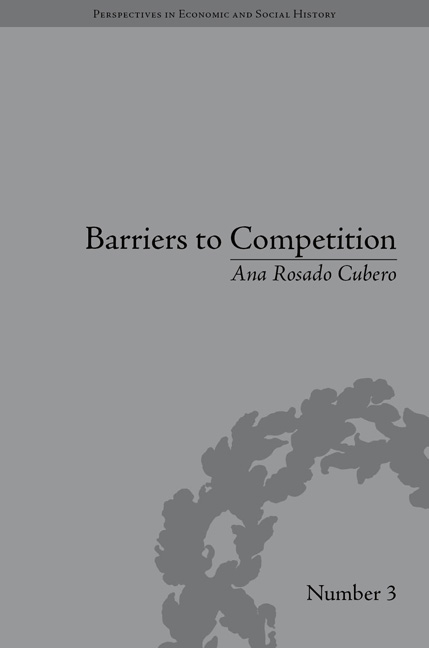Book contents
- Frontmatter
- CONTENTS
- Dedication
- Acknowledgements
- Introduction
- 1 Imperfect Competition in Economic Theory Before 1956
- 2 Barriers to Entry: the Late 1950s and the 1960s
- 3 The Harvard and Chicago Schools: Two Ways of Studying Barriers to Entry
- 4 Barriers to Entry in the 1970s
- 5 Barriers to Entry in the 1980s
- 6 Barriers to Entry: Current Analysis
- Conclusion
- Appendix: Tables
- Notes
- Works Cited
- Index
Conclusion
- Frontmatter
- CONTENTS
- Dedication
- Acknowledgements
- Introduction
- 1 Imperfect Competition in Economic Theory Before 1956
- 2 Barriers to Entry: the Late 1950s and the 1960s
- 3 The Harvard and Chicago Schools: Two Ways of Studying Barriers to Entry
- 4 Barriers to Entry in the 1970s
- 5 Barriers to Entry in the 1980s
- 6 Barriers to Entry: Current Analysis
- Conclusion
- Appendix: Tables
- Notes
- Works Cited
- Index
Summary
Market price is the main approach that the economy as a science employs as an indicator of scarcity or abundance of supply or demand in every market. The problem appears when price is manipulated by one side of the market, when price loses its status as an indicator, which means the market doesn't work freely. This is due to the fact that we lose the right information about each market in question. Market price has given rise to a lot of written opinions since scholastics’ just price, amongst them that of Adam Smith, who in 1776 wrote about the difference between price of competition and monopoly price:
The price of monopoly is upon every occasion the highest which can be got. The natural price, or the price of free competition, on the contrary, is the lowest which can be taken, not upon every occasion, indeed, but for any considerable time together. The one is upon every occasion the highest which can be squeezed out of the buyers, or which, it is supposed, they will consent to give; the other is the lowest which the sellers can commonly afford to take, and that the same time continues their business.
Economists are looking for a way to demonstrate which price has been reached in a competitive market and is, therefore, fair, and which price responds to a monopolistic market because suppliers are getting extra profits due to market control. The idea is not difficult to understand, indeed, the difficulty lies in demonstrating who are the agents and how they are controlling the market.
- Type
- Chapter
- Information
- Barriers to CompetitionThe Evolution of the Debate, pp. 169 - 174Publisher: Pickering & ChattoFirst published in: 2014



